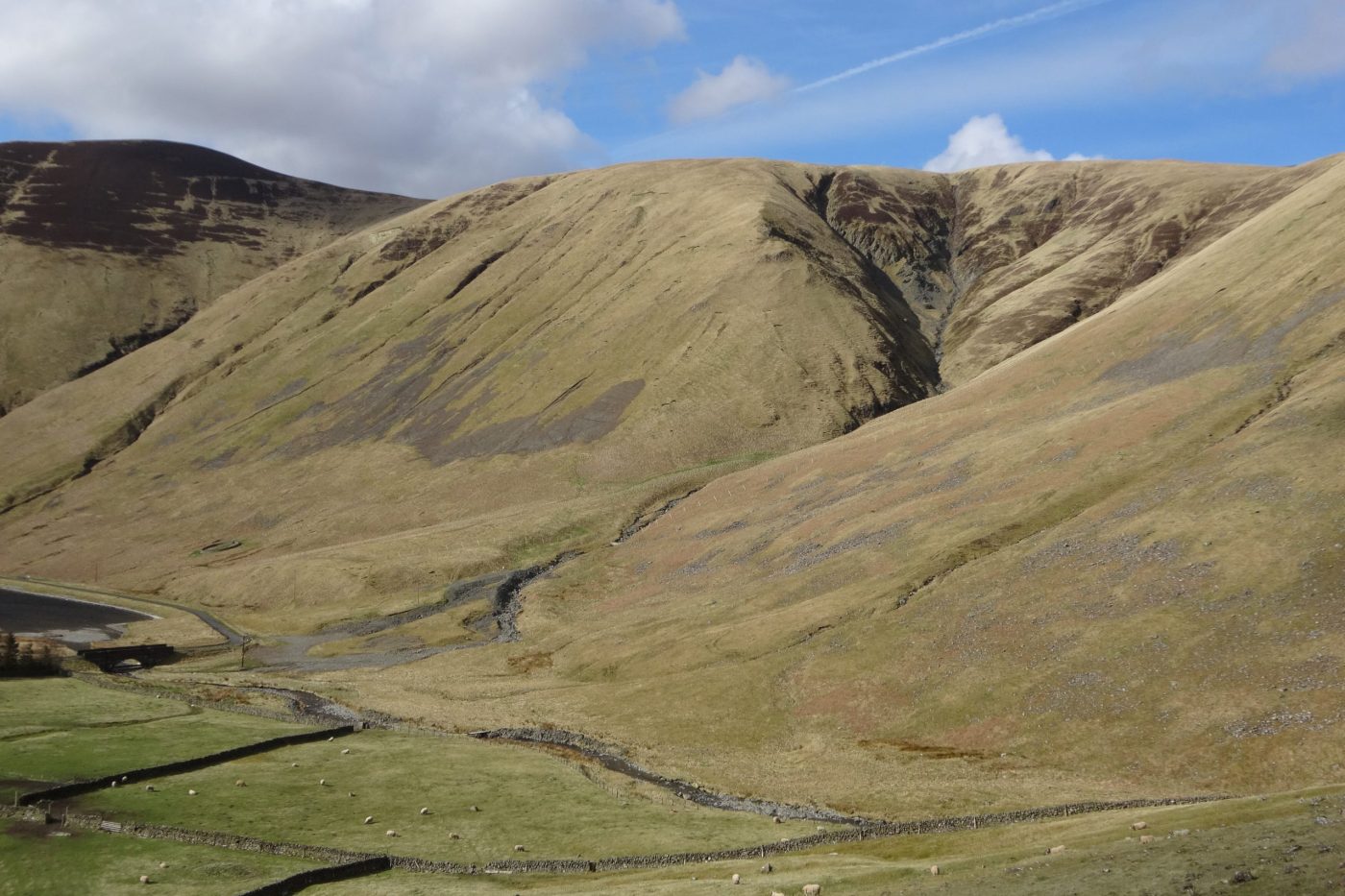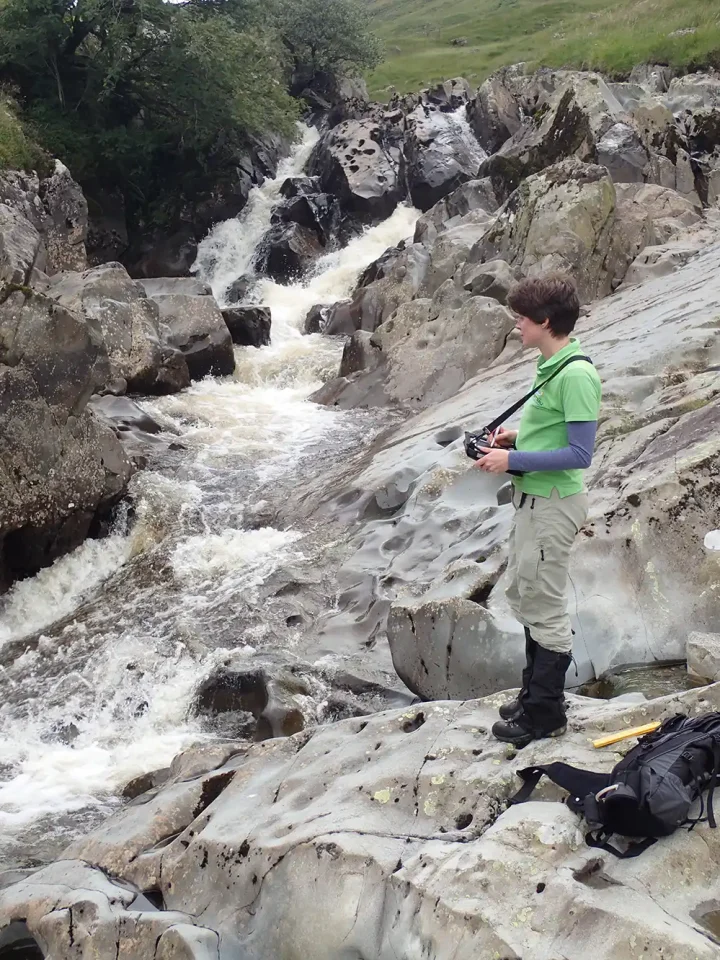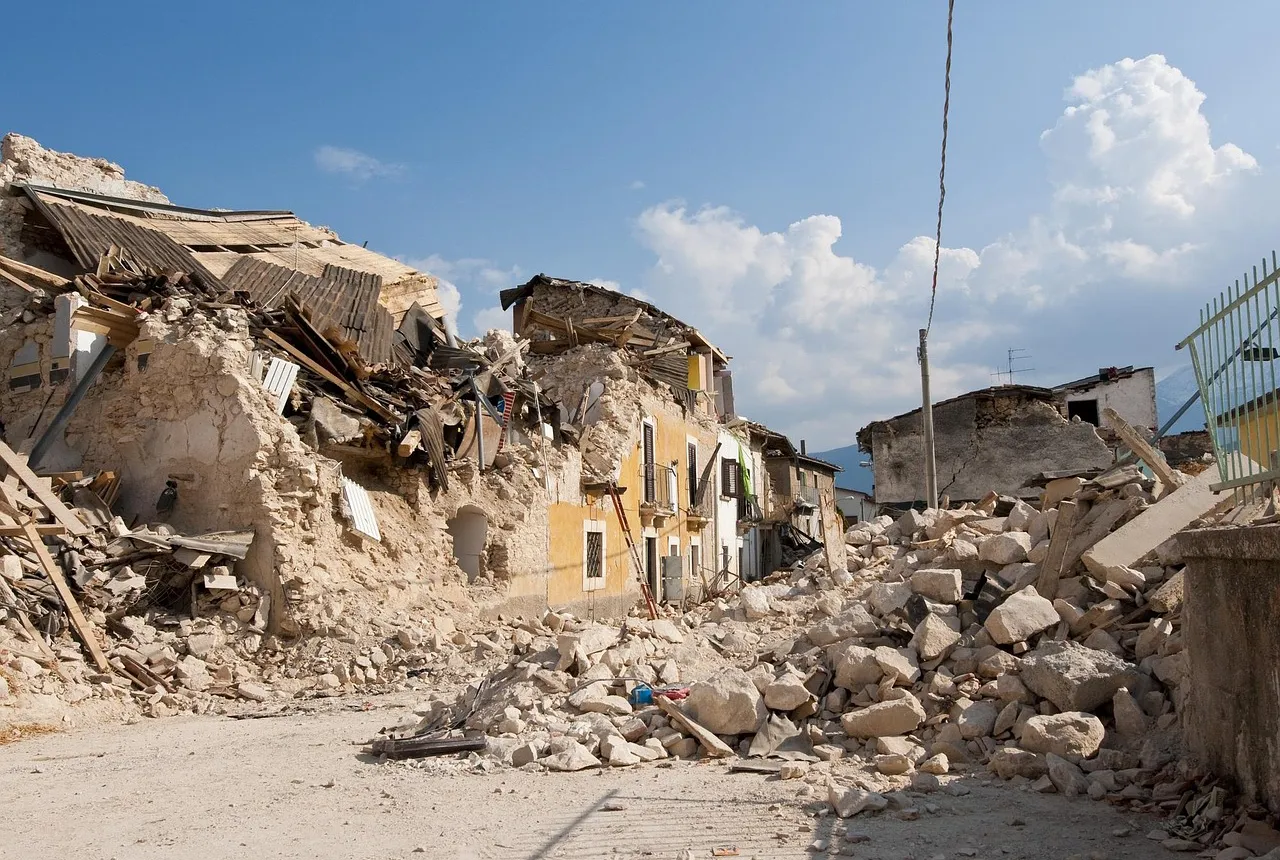Moving stones: faults, slopes and sediments
Fractured rock along faults affects sediment movement on slopes with implications for the design of infrastructure.
12/01/2024
Deposits on upland hillslopes are formed by a range of processes like debris flows, rock falls, slope wash and soil creep. The movement of sediment by these processes occurs over days, years or decades and can have far-reaching implications. Over geological timescales it can influence the relief of mountain ranges, but on human timescales it is also a potential geohazard affecting roads, bridges, and reservoirs, and a key factor in managing river habitats and water quality.
Faults are important geological features, even when they are no longer active tectonic structures. They are often associated with highly fractured ‘damage zones’ that are relatively weak, providing abundant source material for slope processes and acting as conduits for groundwater flow. We investigated how faults control the types of deposits that are produced on upland slopes by weathering and erosion, and how the direction of a fault’s intersection with a hillside influences the way sediment is mobilised and transported to rivers and reservoirs.
Study area: Tweedsmuir Hills, Scotland
In the Tweedsmuir Hills, in Scotland’s Southern Uplands, the rolling upland landscape is bisected by a series of brittle faults comprising highly fractured damage zones in the otherwise hard, metasedimentary rocks. The study area, at the head of the Talla Reservoir, provides a prime opportunity to compare the geomorphological imprint of slope-oblique faults that traverse across a slope at a low angle (roughly perpendicular to the slope direction) with that of slope-parallel faults (roughly parallel to the slope direction).

Examining debris flow deposits in the Codleteth Burn, Talla, Southern Uplands. BGS © UKRI.
Faults that traverse slopes at low angles are associated with enhanced regolith (weathered bedrock) production, which forms a more-or less continuous spread of colluvial deposits (loose sediments that move downslope under gravity) across the slope. Sediment transfer to the valley floor is limited because topographical breaks associated with the slope-crossing structures disrupt gully systems and inhibit sediment ‘flow’ downslope.
By contrast, slope-parallel faults are associated with more focused erosion along fault zones, giving rise to a deep and well-connected gully system. The alignment of slope and fault directions creates positive feedback, which enhances downslope erosion and transport to the valley floor. This feedback has resulted in approximately 20 times more rock being eroded per metre of fault length than in the slope-oblique fault system.

Observing the sparsely fractured (unfaulted) wacke sandstone in the bed of the Gameshope Burn. BGS © UKRI.
Influence on infrastructure design
The movement of sediment is associated with geohazards such as debris flows and rock falls as well as slope instability that can damage upland transport, energy and water infrastructure. However, sediment movement on slopes is a natural part of how our landscape behaves and interrupting or altering the flow of sediment from hillslopes into streams can affect river environments and habitats, and influence water quality in reservoirs.
Understanding the mechanisms of active slope processes and their distributions within the landscape is necessary to ensure we can design effective approaches for managing both the impact of moving sediment on our built infrastructure, and the effect this infrastructure has on our rivers and reservoirs.
Another way of looking at it is that every slope has its own story. Our work in Talla demonstrates how geomorphological mapping and quantitative field analysis can be used to help understand the dynamics of slope systems, adding to our knowledge of the ‘language’ of slopes. By understanding how their past geological history influences their present processes, we can learn to better ‘read’ slopes and ensure we develop more positive relationships with them.
About the authors

Dr Katie Whitbread
Survey geologist
Relative topics
Reference
Whitbread, K, Thomas, C, and Finlayson, A. 2023. The influence of bedrock faulting and fracturing on sediment availability and Quaternary slope systems, Talla, Southern Uplands, Scotland, UK. Proceedings of Geologists’ Association, in press. DOI: https://doi.org/10.1016/j.pgeola.2023.11.003
Latest news

‘Three norths’ set to leave England and not return for hundreds of years
12/12/2025
The historic alignment of true, magnetic, and grid north is set to leave England, three years after they combined in the country for the first time since records began.

BGS agrees to establish collaboration framework with Ukrainian government
11/12/2025
The partnership will focus on joint research and data exchange opportunities with Ukrainian colleagues.

Making research matter: BGS joins leading research organisations in new national initiative
10/12/2025
A new alliance of 35 organisations has been formed that is dedicated to advancing science for the benefit of people, communities, the economy and national priorities.

New 3D model to help mitigate groundwater flooding
08/12/2025
BGS has released a 3D geological model of Gateshead to enhance understanding of groundwater and improve the response to flooding.

Scientists gain access to ‘once in a lifetime’ core from Great Glen Fault
01/12/2025
The geological core provides a cross-section through the UK’s largest fault zone, offering a rare insight into the formation of the Scottish Highlands.

New research shows artificial intelligence earthquake tools forecast aftershock risk in seconds
25/11/2025
Researchers from BGS and the universities of Edinburgh and Padua created the forecasting tools, which were trained on real earthquakes around the world.

BGS welcomes publication of the UK Critical Minerals Strategy
23/11/2025
A clear strategic vision for the UK is crucial to secure the country’s long-term critical mineral supply chains and drive forward the Government’s economic growth agenda.

New funding awarded for UK geological storage research
21/11/2025
A project that aims to investigate the UK’s subsurface resource to support net zero has been awarded funding and is due to begin its research.

UK braced for what could be the largest solar storm in over two decades
12/11/2025
Intense geomagnetic activity could disrupt technology such as communication systems, global positioning systems and satellite orbits.

First distributed acoustic sensing survey completed at UK Geoenergy Observatory
12/11/2025
New research at the Cheshire Observatory has shown the potential for mapping thermal changes in the subsurface using sound waves.

Latest BGS Geology 50K mapping data launched
06/11/2025
Some of our most widely used maps have received a major update, including the 1:50 000-scale map series that now includes enhanced coverage of Great Britain.

New research highlights significant earthquake potential in Indonesia’s capital city
04/11/2025
Research reveals that a fault cutting through the subsurface of Jakarta could generate a damaging earthquake of high magnitude.


